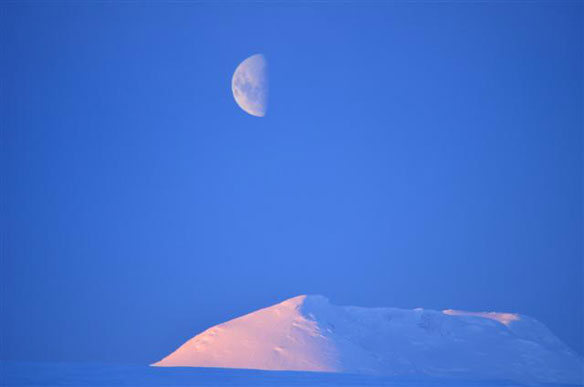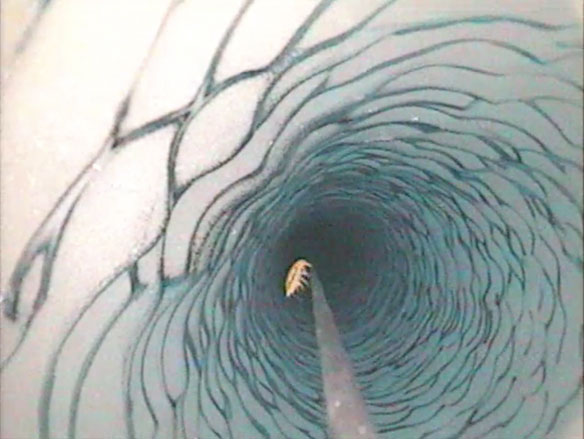
Mount Francais, to the north of Palmer Station on Anvers Island, Antarctica. When viewing the evening moon from in the Northern Hemisphere, it is always in the southern sky and, when partial, always illuminated on its right side. Viewed from Palmer Station (as in this photograph) and everywhere else in the Southern Hemisphere, the evening moon is always in the northern sky and, when partial, always illuminated on its left side. The Antarctic Peninsula, the rugged protrusion extending towards South America, is one of the most rapidly warming places on the planet. Photo source: ©© Steven H. Untracht, M.D, National Science Foundation
Excerpts;
Results published this week by a team of polar scientists from Britain, Australia and France adds a new dimension to our understanding of Antarctic Peninsula climate change and the likely causes of the break-up of its ice shelves…
Read Full Article, Science Daily
Antarctica warmth unusual, but not unique, BBC News
Ice shelves are floating extensions of the grounded ice covering the continent. According to the British Antarctic Survey (BAS), ice equivalent to 1,000 years of British domestic water consumption has been lost over the past half century.
Arctic sea ice levels to reach record low within days, Guardian UK
Arctic sea ice is set to reach its lowest ever recorded extent as early as this weekend, in “dramatic changes” signalling that man-made global warming is having a major impact on the polar region.
Man partly to blame for Antarctic ice shelf collapse, AFP

An international team of researchers funded by NASA and the National Science Foundation (NSF) traveled to one of Antarctica’s most active, remote and harsh spots to determine how changes in the waters circulating under an active ice sheet are causing a glacier to accelerate and drain into the sea. NASA
This critter is a three-inch long Lyssianasid amphipod found beneath the Ross Ice Shelf, about 12.5 miles away from open water. NASA scientists were using a borehole camera to look back up towards the ice surface when they spotted this pinkish-orange creature swimming beneath the ice. Captions and Photo source: NASA









